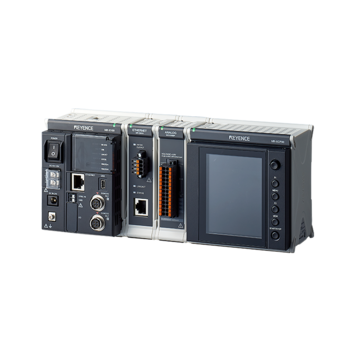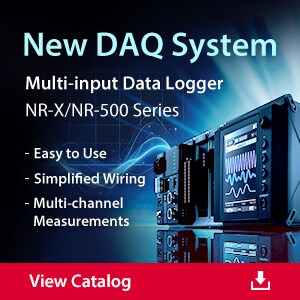Data Acquisition (DAQ)
Temperature Data Collecting Devices Guide
-
Tags:
- Data Acquisition , Temperature
Temperature data collection, also known as temperature data logging, isn’t a novel concept. In fact, the first temperature device that acted as a temperature data logger, the thermograph, was conceptualized in the 19th century. However, they weren’t quite accurate; they had accuracy within a few degrees Celsius. This level of precision was sufficient, as thermographs were used to observe trends over time rather than exact measurements.
Then, in the 1930s, came the thermistor. Thermistors are temperature-sensitive resistors whose electrical resistance changes along with the temperature change. Over time, thermistors became commonplace in temperature data loggers as they’re preferred for their ±0.1°C accuracy within the -55°C to 150°C range. But for a thermistor to be effective, it has to be in direct contact with the object whose temperature is measured.
Assuming the thermistor isn’t measuring ambient temperature, the physical contact requirement might pose a challenge for applications requiring non-contact temperature measurement. And that is where non-contact temperature sensors and temperature data loggers come in. In this guide, we’ll discuss temperature data loggers, how they work, and why they’re necessary in modern applications.
So, without further ado, let’s dive right in.
What is a Temperature Data Logger?
As its name suggests, a temperature data logger is typically a portable temperature device that allows you to monitor and, most importantly, record temperature data over a period of time. This data is typically stored on the temperature device, which makes it available for further analysis should the need arise.
Temperature data loggers can be used to monitor and record temperature data of virtually anything, including assets, packaging, cargo, etc. They’re most commonly used in applications that involve perishable goods, such as fruits, meats, and medication, but also in other applications that demand precisely controlled temperature environments.
They’re typically small, battery-powered devices with a processing unit, one or more temperature sensors, and an internal memory for temperature data collection. KEYENCE’s NR-X Series Multi-input Data Collection System is a compact and super-lightweight all-in-one multi-measurement system that can be used—in conjunction with an adequate measurement unit—to measure temperature in a variety of different ways. The KEYENCE system is powerful enough to add elements of a data acquisition system (DAQ). For example, the data can be filtered and processed without the need for a PC.
We’re here to provide you with more details.
Reach out today!

Why is a Temperature Data Logger Required?
Temperature loggers are essential across nearly all industries and applications in which temperature monitoring is crucial to maintain the quality of goods at any point during the production and logistics process, from the acquisition of thermally sensitive materials to processing and delivering temperature-sensitive goods to the end consumer.
Many manufacturing processes are temperature-sensitive because the properties of certain materials are subject to temperature-induced chemical or structural change. Let’s assume that a manufacturing process is hotter or cooler than it should be. As a result, the process itself might be less efficient, or it could potentially result in a defective product.
Additionally, some goods are manufactured and transported under strict environmental conditions, which may include maintaining a specific temperature range. Temperature data loggers can provide accurate data to optimize the manufacturing process and the environmental conditions necessary for manufacturing, transport, and storage, thus ensuring product quality, safety, and compliance with industry standards.
It’s not hard to imagine a shipment of pharmaceuticals en route from California to New York, with the checkpoint in Iowa. The temperature data logger reveals that the shipment fell outside the required temperature range somewhere along the way.
Armed with this information, the temperature management teams can stop the shipment at the checkpoint and prevent additional spending associated with delivering a bad shipment of vaccines to New York.
By analyzing the data collected by the temperature data logger, you can check whether the shipment has been exposed to temperatures outside of the required range for the entire length of the supply chain. This not only ensures product quality but also provides cost-saving opportunities.
Types of Temperature Data Loggers
In the past, data loggers were designed as dedicated, standalone units measuring one or several different metrics. However, those devices were usually quite large and heavy, and moving them around required great effort.
Fortunately, the advent of computers and modular technology made data loggers more compact and, thus, more portable. While dedicated devices still exist, most modern data loggers are comprised of a main computing unit, such as KEYENCE’s NR-X100W, and a modular measurement unit, which attaches to the main unit and allows measurements of specific metrics.
As such, the most effective categorization of temperature data loggers is by sensor type:
- Thermocouples - Thermocouples are incredibly widespread as they operate in a very wide temperature range from about -200°C to 1750°C. KEYENCE’s NR-TH08 and NR-TH08P measurement units are both suitable for pairing with thermocouples.
- Thermistors - Thermistors have a non-linear response and are perfect for precise temperature measurement in a limited temperature range of 55°C to 150°C. KEYENCE’s NR-TH08 measurement unit is suitable for pairing with thermocouples.
- Infrared Sensors - KEYENCE’s FT Series of infrared sensors measure temperature by detecting infrared radiation emitted by an object. As such, they don’t need to come into contact with the object surface, which is great for moving objects or objects that can’t be touched. They’re the smallest in class and can be used on a pretty wide temperature range, but they’re most accurate when calibrated for a specific range. KEYENCE’s NR-HA08/08P and NR-TH08 can be coupled with these sensors.
Get detailed information on our products by downloading our catalog.
View Catalog

How Do Temperature Data Loggers Work?
Depending on the sensor type, any of the aforementioned measurement units would receive the signal input from the sensor and feed the data to KEYENCE’s NR-X100W unit, which interprets and stores the data.
These measurements are taken at regular intervals and fed to the main unit’s memory storage for review. The collected data can be viewed and analyzed on the temperature device itself or transferred to a personal computer for further analysis.
Benefits of Temperature Data Loggers
Temperature data loggers come with numerous benefits:
- Accuracy - Temperature data loggers provide accurate and reliable measurements over time, which is crucial for temperature-sensitive applications (16 bit A/D resolution).
- Continuous Data Collection - Temperature data loggers can operate continuously, ensuring uninterrupted data collection.
- Long-Term Analysis - Data collected by temperature data loggers can be used to analyze trends and patterns over time.
- Compliance - Stored and organized data helps your organization comply with industry regulations.
Summary
Temperature data loggers are incredibly useful temperature monitoring devices, especially in settings in which temperature monitoring is crucial. Now that you’ve got a grasp on what they are and how they work, you should search for a device that would fit your application needs.
Visit KEYENCE to find the perfect device for your specific application needs. With accurate measurements, continuous data collection, and long-term analysis capabilities, our data loggers are essential tools for any measurement application.
Contact us to learn more about how our advanced technology can help take your business to the next level.
Contact Us

![Temperature Measurement Basics [Thermocouples]](/img/asset/AS_118846_L.jpg)

